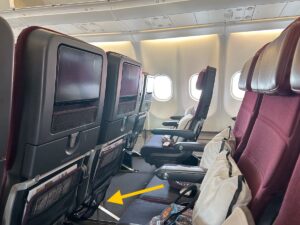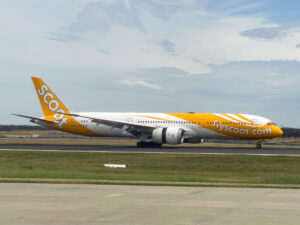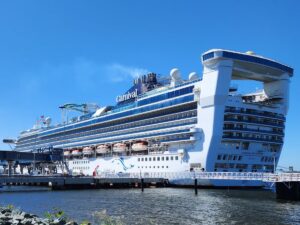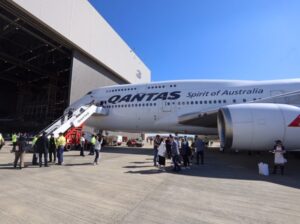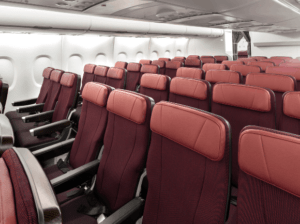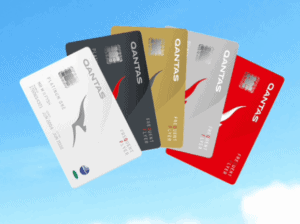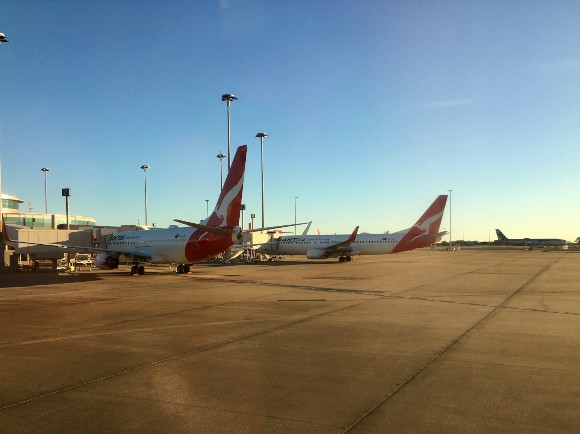
After posting a $771 million underlying profit before tax in the first half of the 2019-20 financial year, most of this was squandered away in the second half. The full-year underlying profit before tax was $124 million – 91% lower than last year.
The total statutory loss before tax for 2019-20, however, reached $2.7 billion. Most of this was due to aircraft write downs and one-off redundancy costs. The value of Qantas’ 12 Airbus A380s has been particularly affected by this crisis as these aircraft may not return to the skies for years, and they have limited resale value as there is now an enormous global oversupply of the superjumbo aircraft. Qantas’ A380s are currently in deep storage in the United States.
Between April and June 2020, the Qantas Group’s revenue fell by a staggering 82%. But costs were reduced by 75%, offsetting much of the loss.
There were some bright spots in an otherwise depressing result for the national carrier. Qantas Freight and charter operations in WA continue to perform well. Qantas Loyalty also continues to generate “significant cashflow” for the group, with the Loyalty division reporting only a 9.3% reduction in profit this year. Qantas’ loyalty businesses made a profit of $341 million in 2019-20.
“Qantas Loyalty’s profit was down less than 10 per cent and member satisfaction increased in the fourth quarter, which shows the strength of that business,” Qantas CEO Alan Joyce said.
“Qantas Freight has been a major beneficiary of the shift to people shopping online and our charter flying for resources companies is strong.”
Recovery still a long way off
Qantas’ revenue from domestic passengers was down 97% between April and June 2020. For Jetstar’s Australian and New Zealand operations, there was a 99% reduction. Neither airline operated regularly scheduled international flights during this period.
The domestic market is slowly recovering from its low point in May 2020, when Qantas operated just 0.3% of its usual capacity. Qantas operated 19% of its usual capacity in July, and expects this to increase to 20% for the month of August. But the opening and closing of Australia’s state borders is causing significant issues. Previously, Qantas had expected to restore capacity to around 32% of pre-pandemic levels this month.
The near-term outlook for international flying is much less certain. Qantas today said that it does not expect international flights to return until at least July 2021, with the possible exception of Trans Tasman services. With a special “trans-Tasman bubble” now looking less likely each day, this will likely depend on the timeline of a potential COVID-19 vaccine rollout.
“COVID will continue to have a huge impact on our business and we’re expecting a significant underlying loss in FY21,” Joyce said.
Qantas will need to “reinvent” itself
Speaking at today’s 2019-20 results announcement, the Qantas CEO repeatedly used the word “reinvention”.
“But, just as we’ve done in the past, there will be some reinvention required to succeed in a different world,” Joyce said.
He later added: “On a permanent basis, the plan will deliver around $1 billion in annual cost savings from [the 2022-23 financial year]. A lot of that will come from reinvention – and we’ll have more to say on this in the months ahead.”
Joyce argues that reinvention will be necessary due to structural changes in the aviation industry & competitors, a slow recovery from deep economic recession, changing customer expectations and continuing border uncertainty.
While Joyce was referring here to the airline’s three-year recovery plan and workforce reduction, which will significantly strip ongoing costs from the business, he also appears to be signalling some future changes to the airline’s core strategy and business model. Perhaps Qantas will fly to different places in the future, and focus more on non-stop ultra-long-haul flying.
Either way, the Qantas of tomorrow may look a lot different to the Qantas of yesterday.
Free kick from Virgin Australia’s misfortune
The Qantas Group expects its share of the Australian domestic market to increase naturally from 60% to 70% due to Virgin Australia reducing its fleet and shutting down Tigerair. With Virgin’s business model also changing, Joyce sees this as an opportunity.
“Looking further ahead, we’re in a good position to ride out this storm and make the most of the recovery. Our market position is set to strengthen as the only Australian airline with a full service and low fares domestic offering as well as long haul international services,” Joyce said.
Last week I warned that Virgin Australia will need to be clever about its positioning to avoid getting squeezed by Qantas and Jetstar (which is owned by Qantas). With Joyce today saying that its market position is “set to strengthen” due to having a full service and low-cost offering, Virgin will need to watch out.
Join the discussion on the Australian Frequent Flyer forum: Qantas 2020 full-year financial results




























